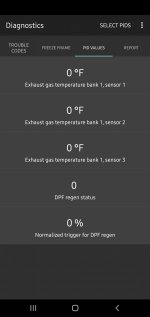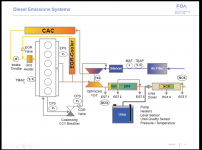Yes but Banks says that the "Regen Trigger" is not measuring soot%. But I now think it might be. Also given that the Regen Trigger PID is now showing 32% and it has only been 1 hour since the last regen. I will report back after the next time I tow my TT.
What I think will happen and has been happening, and what I probably would have seen if I had been displaying this Regen Trigger gauge on my iDash is this.... The % might be at some higher % like it is now at 32% after just an hour or two since the last regen. But then I tow my TT and that does a "passive" regen that lowers the Regen Trigger % to some lower number like 7%. Then the next time I drive in town a little it climbs back up. But because I mostly tow with the truck, those passive regens keep lowing the % so it never gets to 80, 90, 100% or whatever would trigger a regen. So on my truck, with mostly towing miles, the only regens that have happened so far are those that are triggered by the engine hour clock hitting a 24 hour mark. Like I said, it has not been approximate. My regens have occurred exactly at 24, 48, 72, 96, and 120 engine hours.


